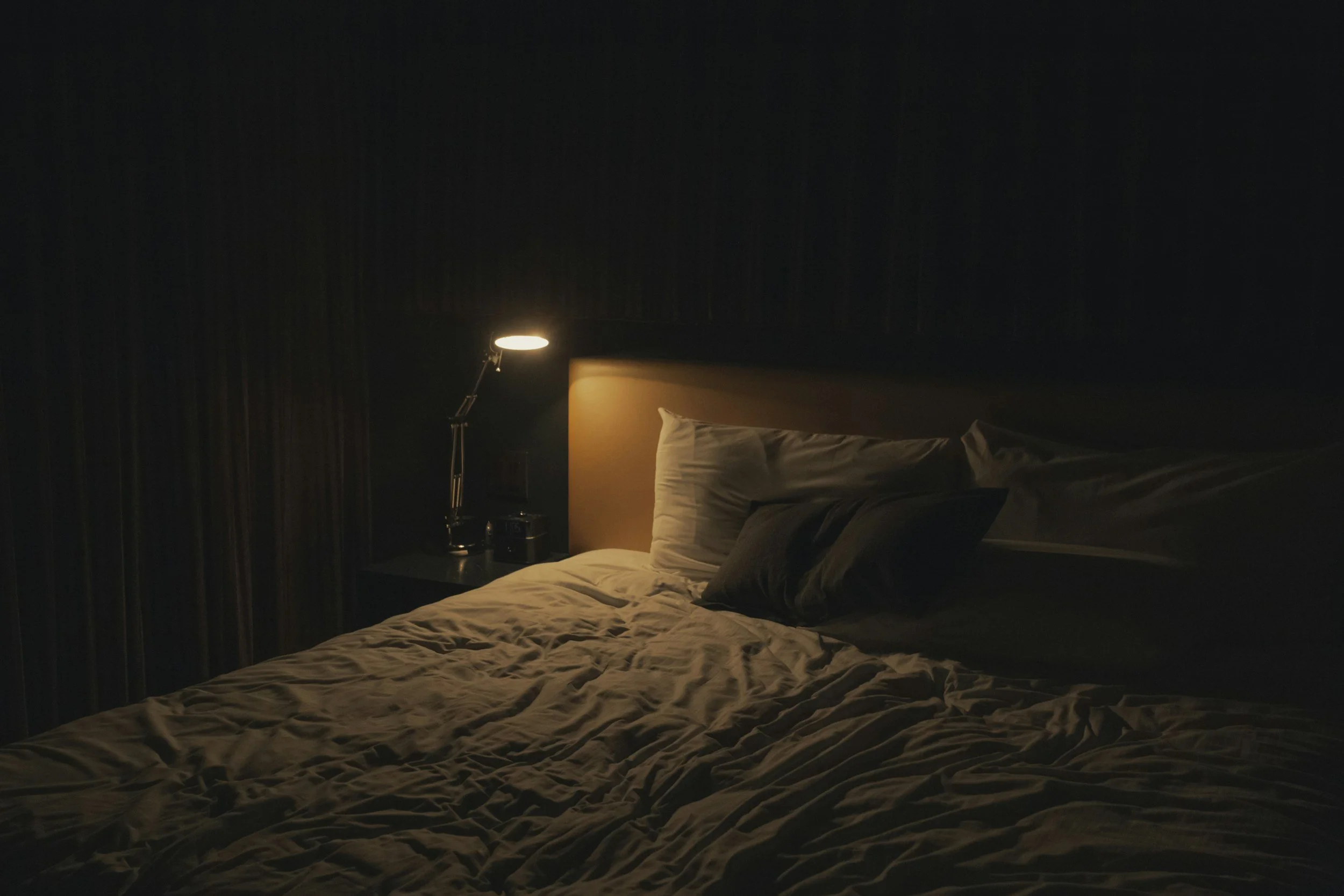
COMPETITION PREPARATION ESSENTIALS
SLEEP
HYGIENE

THE PROBLEM:
OVERTRAINING, UNDER-RECOVERING
Between late-night rehearsal schedules, packed performances, school, and other responsibilities, many dancers neglect proper rest and are chronically sleep-deprived as a result.
Pushing through fatigue may feel like dedication, but sleep is one of the most powerful tools for recovery, mental clarity, and physical performance.
Studies in both sports and performing arts have shown:
(Arbinaga, Mendoza-Sierra, & Fernández-Acosta, 2024)
*58%
of professional dancers admit to sleeping less than 8 hours per night.
In the months leading up to a performance, dancers typically sleep an average of between
*6.5 - 6.9
hours per night.
Sleep deprivation can lead to a
*30%
increase in injury risk in adolescent athletes.
Athletes who sleep
*8+ hours
have better reaction times, coordination, and accuracy.
During quality sleep, your body:
Repairs damaged muscles following training
Consolidates motor learning and choreography
Regulates hormones involved in stress, appetite, and energy
Boosts immune function to fight off illness
Sleep isn’t just rest—it’s recovery.
WHAT RESEARCH SAYS:
Sleep Disturbances and Injury Risk
A study published in the Journal of Dance Medicine & Science examined the relationship between sleep behaviors, dance exposure hours, and injury risk among collegiate dancers. The study found that while dancers reported poor sleep behaviors, the correlation between sleep patterns and injury incidence was inconsistent. Notably, during months with increased performance demands, such as leading up to competitions, there was a weak positive relationship between poor sleep and higher dance exposure hours, suggesting that performance weeks may negatively affect sleep.
(Fauntroy et. al, 2024)
Mental Fog & Cognitive Challenges
A study by Nicks and Price (2014) highlights that insufficient sleep can compromise essential physiological processes, including memory, coordination, metabolism, and the acquisition of new skills. For dancers juggling rigorous training schedules and academic responsibilities, neglecting sleep can hinder both physical performance and cognitive function.
(Nicks & Price, 2014)
Relationship Between Sleep Quality & Mental Health
A comprehensive study involving professional dancers across six German opera houses showed that a significant percentage experienced sleep disturbances. These sleep issues were linked to higher levels of depression and anxiety symptoms, emphasizing the relationship between sleep quality and mental health. Dancers with sleep problems reported greater psychological distress, highlighting the importance of addressing sleep hygiene to support mental well-being.
(Junge, Stubbe, & Hauschild, 2024)

SLEEP HYGIENE STRATEGIES
It can be difficult to balance sleep during competition season, but with some intentional strategies, dancers can build better sleep hygiene that works with their rehearsal life rather than against it.
-
While your rehearsal schedule may vary, it’s important to keep your bedtime and wake-up time as consistent as possible, even on weekends. Maintaining a stable circadian rhythm improves sleep quality, even if you can’t get 8+ hours every night. Use your body’s natural cues (like feeling drowsy at a certain time) as your guide and stick to it whenever your schedule allows.
-
After intense physical activity, it may be difficult to go straight to bed. A 15–30 minute wind-down routine signals to your nervous system to go into “rest mode”. Practice nervous system regulation with:
Gentle stretching or yoga
Warm showers to promote relaxation
Reading or meditation
Minimizing bright light exposure (especially blue light from screens)
Avoiding caffeine within 6 hours of bedtime
-
Make your bedroom a calm, cool, and quiet space. Your body should associate it with rest—not rehearsing choreography in your head.
Keep the room dark (use blackout curtains or an eye mask)
Keep it cool (60–67°F / 16–19°C is ideal)
Use earplugs or a white noise machine if needed
-
Use a journal or sleep tracking app to note:
Bedtime and wake-up time
Energy and mood throughout the day
Training/rehearsal intensity
This helps you spot patterns and adjust your routine accordingly.
For dancers, a consistent wind-down routine helps your brain and body transition from movement to rest. Music is one of the easiest, most accessible tools to do that.
✔️ Calms your nervous system
✔️ Lowers your heart rate
✔️ Reduces mental chatter
✔️ Trains your brain to associate sound with sleep
This collection of music is curated specifically with dancers in mind: gentle rhythms, ambient melodies, and calming tones to help relax the nervous system, slow your breathing, and release tension.
Think of it as a cool-down for your mind and body. Whether you’re stretching, journaling, or just lying still, this playlist is your invitation to slow down and recover.
Listen up.
(Mirmohamadi, Norozpour, & Zarrabian, 2024).
-
Soft piano and strings to mirror the emotional flow of movement
Ambient soundscapes to slow mental chatter and support deep breathing
Minimal lyrics to let your mind wander and settle
Tempo progressions that ease you from alert to deeply relaxed
REFERENCES
Junge, A., van Rijn, R. M., Stubbe, J. H., & Hauschild, A. (2024). Sleeping beauty? A prospective study on the prevalence of sleep problems and their potential determinants in
professional dancers. Sports Medicine - Open, 10(1), 131. https://doi.org/10.1186/s40798-024-00798-2
Arbinaga, F., Mendoza-Sierra, M., & Fernández-Acosta, G. (2024). Sleep characteristics in dance students related to psychological inflexibility. Journal of Dance Medicine & Science,
29(1):3-12. doi:10.1177/1089313X241263651
Fauntroy, V., Stork, A., Hansen-Honeycutt, J., Deu, R., Klee, H., Martin, J., & Ambegaonkar, J. P. (2023). Sleep, dance exposure hours, and injury risk in collegiate dancers. Journal of
Dance Medicine & Science : Official Publication of the International Association for Dance Medicine & Science, 27(2), 92–98. https://doi.org/10.1177/1089313X231177179
Mirmohamadi, S., Norozpour, Y., & Zarrabian, S. (2024). A review of binaural bates and the brain. Basic and Clinical Neuroscience, 15(2), 133–146.
https://doi.org/10.32598/bcn.2022.1406.2
Nicks, B., & Price, J. (2014). Sleep patterns in collegiate dancers. e-Research: A Journal of Undergraduate Work, 2(1), Article 4. https://digitalcommons.chapman.edu/e-
Research/vol2/iss1/4


